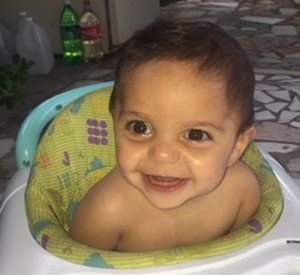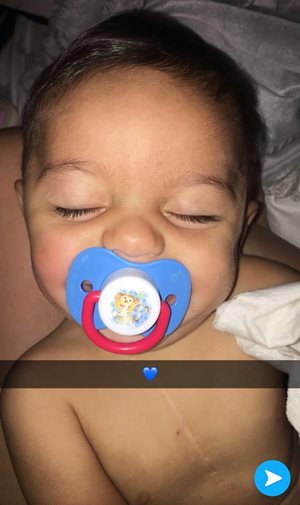Naialee Perez had just given birth to her first child, a baby boy named Liam, when a category five hurricane was making its way towards her hometown in the island of Puerto Rico. Liam was on a ventilator and undergoing treatment for a congenital heart defect in Hospital del Niño in San Juan while those on the island prepared for what would become one of the most catastrophic hurricanes in its history.
“I didn’t know what to expect but was hoping for the absolute best. We spent the hurricane inside the hospital while Liam was still connected to monitors and machines.”
Hurricane Maria made landfall in Puerto Rico on September 20th as a strong category four hurricane that ravaged the island and its infrastructure. The storm caused severe flooding, forced many to evacuate their homes and impacted the entire island’s electrical system. The hospitals were operating with limited resources and on backup generators.
Although South Florida was still recovering from its own crisis due to Hurricane Irma’s landfall in Miami just a week prior, the hospital’s care teams were quick to jump in and offer help to those in the Caribbean.
Dr. Darline Santana, a cardiac intensivist at Nicklaus Children’s Hospital who is from Puerto Rico and has previously worked at Hospital del Niño, helped connect and coordinate the transfer of several children receiving critical care to Nicklaus Children’s Cardiac Intensive Care Unit in Miami.
“From one moment to the next, I was told we would be traveling to Miami. It was just me and the baby. I knew it was best in order to give Liam a better chance, but I was definitely scared,” said Naialee.
 When Liam arrived in Miami, he was already four weeks old and weighed only 2.28 kilos. He was on a ventilator and in a very critical state.
When Liam arrived in Miami, he was already four weeks old and weighed only 2.28 kilos. He was on a ventilator and in a very critical state.
Diagnostic testing revealed he had a complex congenital heart defect called Tetralogy of Fallot with pulmonary atresia, a condition that affects several chambers of the heart including a hole between the lower chambers, and an absent connection from the heart to the lungs, a displaced aorta and muscle thickening within the heart. Pulmonary atresia affects the pulmonary valve of the heart. It does not form properly and the only way Liam was getting blood to his lungs was through leftover oxygen from when he was in his mother’s womb.
The care team was able to print a 3D model of his heart, which was the size of a walnut at the time, in order to carefully plan for his surgery.
Liam underwent a complete repair of Tetralogy of Fallot, with a pulmonary homograft, a donated pulmonary artery with a valve inside to create the necessary connection from his heart to his lungs. He had a remarkable recovery despite the medical and hurricane-related transport hurdles he started off life facing. He was in his mother’s arms and eating on his own within a few days.
Liam is expected to undergo valve replacement surgeries throughout his lifetime as his tiny heart grows.
He celebrated his first birthday by returning to Puerto Rico for the first time.
“It has been a long journey for Liam and myself and I am so grateful to the entire team for getting him healthy. It is truly a celebratory homecoming for all of us,” said Naialee.
